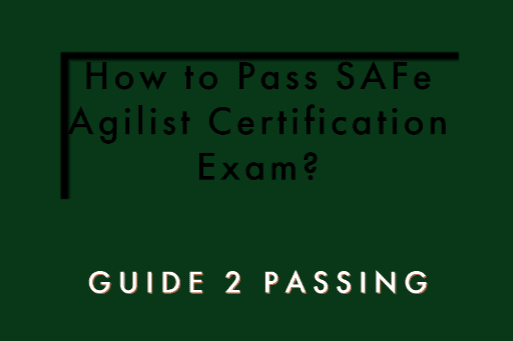The Scaled Agile Framework, or Exam Dumps, is an agile framework developed for development teams. Most importantly, SAFE’s foundation consists of three metaphorical pillars: Team, Program, and Portfolio. Furthermore, SAFe gives a product team flexibility. Moreover, it helps manage some of the challenges larger organizations have when practicing Agile. SAFe consists of a broad knowledge base of proven best practices. Likewise, product teams use SAFe to deliver successful software products.
What Is SAFe ?
The world’s most trusted system for business agility Your customers expect instant gratification, from same-day package delivery to daily software updates for their self-parking car. And they don’t have the patience to wait for your company to figure that out. Now is the time for your organization to adopt a smarter way of working. SAFe is your system to manage digital disruption.
Core principles and values
Core Values
SAFe’s core values describe the culture that leadership needs to foster and how people should behave within that culture in order to effectively use the framework.
Alignment
SAFe requires that companies put planning and reflection cadences in place at all levels of the organization. With these in place, everyone understands the current state of the business, the goals, and how everyone should move together to achieve those goals. By synchronizing people and activities regularly, all levels of the portfolio stay in alignment. Information flows both upward and downward in a timely fashion, unlike traditional top-down, command and control structures.
Built-in quality
In the SAFe framework, agility should never come at the cost of quality. Exam Dumps requires teams at all levels to define what “done” means for each task or project and to bake quality development practices into every working agreement. According to SAFe, there are five key dimensions of built-in quality: flow, architecture and design quality, code quality, system quality, and release quality.

What are the Strengths and Weaknesses of SAFe?
SAFe’s strengths include:
- Helps cross-functional teams collaborate more effectively
- Helps organizations achieve greater transparency
- Aligns all aspects of a project to the broader business goals
SAFe’s weaknesses include:
- Firstly, some believe the frameworke is not pure agile, because requires too much upfront planning and process definition
- Also takes more of a top-down approaches rather than a team-based approach
SAFe Agile Certification & Training
SAFe training modules typically run two-to-four days depending on the subject area. After completing the course, some additional study and preparation gets potential practitioners ready for a multiple-choice certification exam in their chosen discipline.
Becoming a Certified SAFe Lean Portfolio Manager, SAFe-Agilist-5.1 Exam Dumps Certified SAFe Agilist, Certified SAFe Practitioner, or a Certified SAFe Program Consultant prepares people to practice, implement, and introduce SAFe in organizations at a more holistic level. And for more technical staff, there are certifications for Architects, Scrum Masters, Train Engineers, Software Engineers, and DevOps.
SAFe principles
SAFe is built on nine key principles derived from existing Lean and agile principles:
- Take an economic view to allow for optimal leading time while providing the best quality and value.
- Implement systems thinking into all facets of development.
- Assume market and technical variability by preserving choices and encouraging innovation.
- Build incrementally with fast, integrated learning cycles that allow customer feedback and reduce risks.
- Base milestones on objective estimation and evaluation of working systems to ensure there is an economic benefit.
- Limit the amount of work in progress, decrease batch sizes, and manage queue lengths to enable continuous flow.
- Apply cadence (timing), synchronize with cross-domain formation to recognize business opportunities and allow for corrective action as needed.
- Unlock the intrinsic motivation of knowledge workers to reach their unseen potential.
- Decentralize decision-making to become more agile and effective.
SAFe 5.0
The ongoing form, SAFe 5.0, centers around Learn easy undertaking and business deftness as well as the accompanying five center skills:
- Lean agile leadership: Lean agile Exam Dumps leaders drive change and operational excellence, leading by example to help ensure teams reach their potential. This involves modeling SAFe’s Lean agile mindset, principles, and practices.
- Team and technical agility: Teams must possess certain vital skills and adhere to Lean agile practices to create well-designed solutions quickly. Ensuring the technical agility of teams is especiallist important, as they are the ones who ultimately perform the actual work that will be delivered to your customers.
- DevOps and release on demand: The establishment of a continual, ongoing pipeline for deliverables is vital for creating value to meet your customers’ needs.
- Business solutions and Lean systems engineering: The more organizations facilitate Lean agile practices to drive blueprints, development, and deployment, the more innovative they can be.
- Lean portfolio management: A sound organizational strategy that includes financial considerations, portfolio management and compliance-related aspects is essential to SAFe success

Dionne Gausman
I really love your site.. Great colors & theme Many thanks!